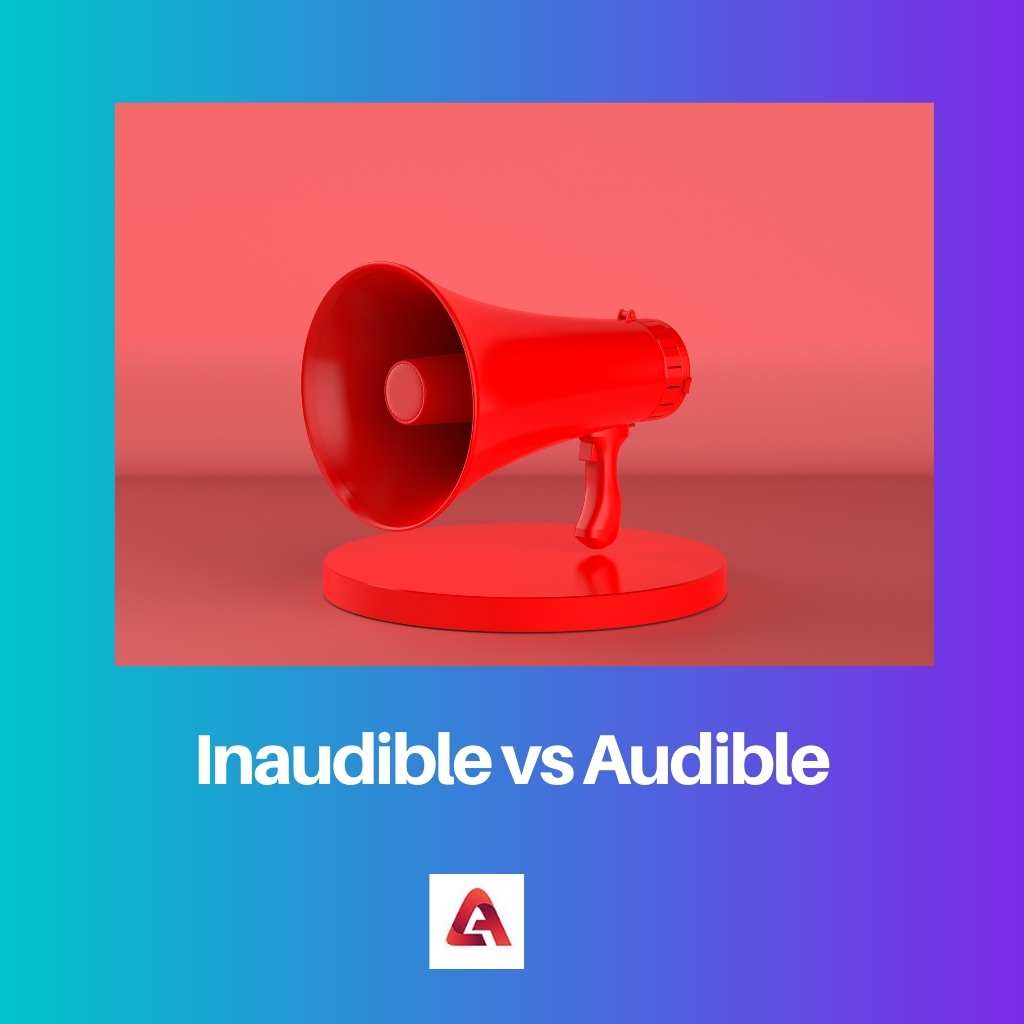Inaudible and Audible are both adjectives and seemingly quite the opposite in meaning. Still, a mere glance into their underlying differences reveals how greatly they differ in the meanings they imply and why their usage must be more thoughtful than it is.
The article below demonstrates these differences and a table that establishes concrete points.
Key Takeaways
- Inaudible refers to sounds too quiet or faint to be heard by the human ear, while audible refers to loud enough to be detected and perceived.
- Inaudible sounds may be present in various environments, but their intensity falls below the threshold of human hearing or is masked by other noises.
- Audible and inaudible sounds are part of the overall spectrum of sound frequencies and intensities, with audibility being a key factor in how we experience and interact with our surroundings.
Inaudible vs Audible
The difference between Inaudible and Audible is that Inaudible isn’t loud enough to be heard by us. On the other hand, the Audible is something we can hear. While both words make up a pair of antonyms, they’re adjectives that describe the clarity of a particular sound.

Inaudible, an adjective, means something that cannot be heard or loud enough to be heard.
An antonym of audible, the word’s usage indicates that we cannot hear a particular sound; in other words, our ears deem the given sound imperceptible.
An Audible can be heard, a sound that is perceptible enough to decipher its identity (source of origin, the message it contains, etc.).
However, in its traditional sense, it only means that people close to the source will be able to grasp the stimulus and that it won’t be propagative.
Comparison Table
| Parameters of Comparison | Inaudible | Audible |
|---|---|---|
| Implied Meaning | Something that cannot be heard | Something that we’re able to hear |
| Event of Usage | Conversations, animal sounds | Conversations |
| Scope of Inference | The content of any kind of inference is pretty high. | The Distance between the listener and the source is More |
| The proximity between Source & Listener | Distanceance between the source and the listener is Less. | The content of any inference is pretty high. |
| Used as | Adjective | Adjective, noun, verb |
What is Inaudible?
Inaudible, an adjective, refers to something that cannot be heard in any minimum capacity. The involved sounds are so feeble to the listener that they’re fundamentathey’reerceptible to their ears.
The adjective primarily refers to any event involving the exchange of sounds, such as conversations.
An antonym for audible, inaudible, refers to something that is not loud enough to be heard by humans in the sense that it’s almost unrecognisable and would go undetected.
Deemed impossible to hear, we don’t hear something labelled loud enough, which would likely go unnoticed.
The word ‘Inaudible’ is defined as something impossible to hear, given that it’s not precisely enough to be heard and doesn’t even crossdoesn’tre the minimum limit that ensures audibility.
Thus, it is used about sounds that do not fall in the range of sounds that are audible to humans, but more so because the Distance between the source of sound and the listener exceeds the ideal limit that would ensure audibility.
To encapsulate the above facts, the word inaudible shall be used for events that aren’t deemed percarbonate via our auditory senses.

What is Audible?
Audible is defined as something that we can hear, but only in the sense that we can detewe’ree sounds and the involved messages in a minimal capacity and do not receive the stimulus in a way that provides us complete clarity about the included data.
Deemed as something perceptible to our ears, something that’s audible is that enough for people to decipher who’s near the so who’s the sound. Still, it won’t be loud, enouwon’t propagate and be understandable till further distance.
When something is audible, it is perceptible to our ears in a way that we recognize the tone, style, and type of verbal communication or the kind of sound it is. Still, usually, it isn’t easy to understand the exact message contained in such an auditory stimulus, and subsequently, it’s challenging its complete clarity of the corresponding sound.
Thus, when attempting to establish a complete answer to ‘What is Audible?’’ it would be safe’ to say that it is a sound whose existence is easily recognized by our ears. Still, it doesn’t mean that it doesn’t seem able to understand the exact meaning of that information.

Main Difference between Inaudible and Audible
- Inaudible refers to something practically impossible to hear, whereas Audible refers to something recognizable but doesn’t provide clarity.
- Inaudible events go unnoticed, given that they’re imperceptible to our ears, but Audible events hint at what the communication might be about.
- Something not loud enough for us to be heard is deemed Inaudible, but when the sounds are recognizable and the auditory stimulus makes sense (even to a bare minimum), we can deem it as Audible.
- Inaudible and Audible events can comprise conversations between humans and animals with sounds of frequencies we can’t hear. Still, the difference here lies in the proximity between the source and the listener. Generally, sources in Inaudible events are way farther than those of Audible events.
- Inaudible is used only as an adjective, but Audible can be used as an adjective, noun, and verb.

- https://asa.scitation.org/doi/abs/10.1121/1.3438479
- https://ieeexplore.ieee.org/abstract/document/7079711/
